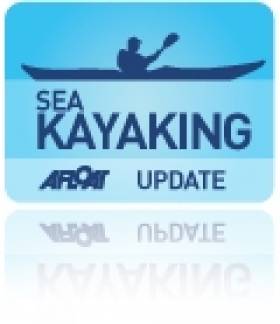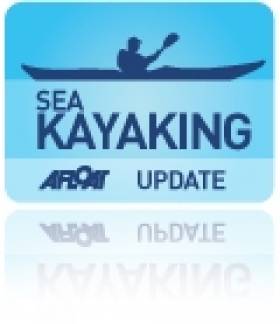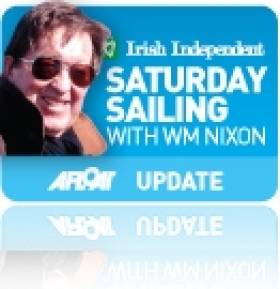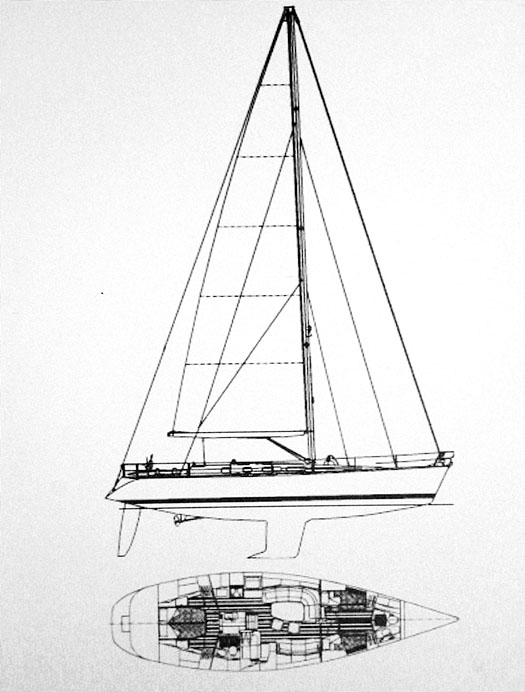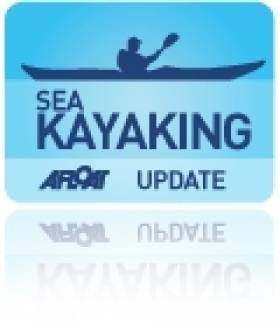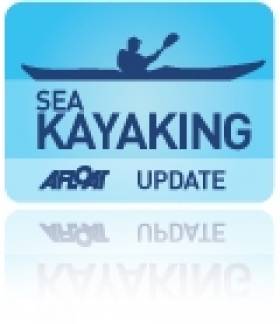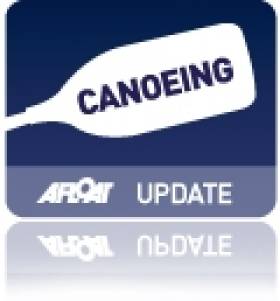Displaying items by tag: circumnavigation
#Kayaking - Red Bull recently caught up with sea kayaking adventurer Justine Curgenven, who is currently over a month and more than half way into her 1,000-mile circumnavigation of Ireland.
Unlike Elaine 'Shooter' Alexander's epic solo voyage two years ago, the New Zealander has some extra paddle power in the form of her partner Barry Shaw and friend Roger Chandler.
"We aren't going for any speed records, just hoping to enjoy the scenery and meet some local people," she says of their 50-day adventure around Ireland.
But that's not to say our waters aren't challenge for this experienced kayaker.
"Irish waters can be very challenging," says Curgenven. "They get 2-3m swells quite regularly and are known for their surf beaches, which we are trying to avoid!"
Despite the hard work, the film-maker says "time really does fly when you're having fun... If you like circumnavigations then it's really a great island to paddle around."
Red Bull has more on the story HERE.
Inishowen Sea Kayak Symposium This Weekend
#SeaKayaking - The East Inishowen Sea Kayak Symposium takes place this weekend from 26-28 April.
Hosted by Just Kayak at the shorefront in Moville, Co Donegal, the weekend costs €130 for all coaching and guides, plus two nights self-catering bed and breakfast plus lunches and an evening meal.
Friday evening will feature a talk from Elaine 'Shooter' Alexander, discussing her epic circumnavigation of Ireland by sea kayak two years ago that we followed here on Afloat.ie.
Saturday will be a full day of coaching and guided trips around the Inishowen peninsula, followed by an evening of talks from guest coaches.
The final day on Sunday features a choice of different coaching sessions - and for something a little different, chef Brian McDermott will give a demonstration of outdoor cooking which might prove handy on your next kayaking trip.
For more details and booking info visit the Just Kayak website.
In other sea kayaking news, a Plymouth couple are hoping to be the first husband-and-wife team to kayak around the British and Irish coasts.
As The Herald in Plymouth reports, Andy and Jane Morton from Bere Alston left Plymouth aboard their double kayak Persey earlier this month beginning their five-month challenge for the RNLI and a local MS charity.
You can follow the couple's progress via their website HERE.
Classic Circumnavigation With a Home-Made Boat
#circumnavigation – A traditional global circumnavigation was celebrated in Dun Laoghaire last night with the award of the Irish Cruising Club's premier trophy, the Faulkner Cup, to Fergus Quinlan of Kinvara on Galway Bay for the log of the third stage of the 40,486 mile global circumnavigation he completed last year with his wife Kay aboard the 12M steel cutter Pylades, a van de Stadt design which he built himself between 1995 and 1997.
Those of us who have stayed on in Ireland to live through the recession should maybe have taken more notice when, around four or five year ago, architects like the skipper of Pylades started finalising plans to take off for the dream cruise, round the world in easy stages until there was a chance there might be some signs of the green shoots of recovery back home. Of all trades, it was the architectural profession which would have been the first to notice that the flamboyant growth of the tiger years was starting to wilt.
A previous decade in which long distance cruising came top of the agenda was the 1930s, when the Great Depression likewise gripped the world. Then about ten year ago when New Zealand was in localised recession, people simply spent more time sailing in what is a sailing paradise. They already had the boats to do it with, now they'd the free time. But as they didn't have the money for fancy new sails and other gear, they made do with the equipment they had. So this upsurge in sailing activity was of little benefit to the marine industry, but by living frugally afloat the people could enjoy themselves, and returned to work refreshed as the economy stared to pick up.
But in any case, when you've built a boat as good as Pylades, long distance voyaging is the only way to go. She's all of a piece, and is yet another manifestation of the versatility of Dutch designer Ricus van de Stadt (1910-1999). A couple of weeks ago, we were discussing his vision in the use of plywood construction with the Black Soo type from 1956, and Zeevalk before that in 1949. But in 1955 he was also ahead of the posse in glassfibre with the appropriately named Pionier 9, one of Europe's first production boats in GRP. Though long out of production, they're still going strong – there's one of them lying to a mooring in Malahide Estuary, just across the channel from the yacht club.
And as you'd expect from a Dutchman, he was tops with steel. The Caribbean 12 design from which Pylades was built is double chine for ease of construction, yet is still a handsome boat of the ideal size – for the life of me I can't see why anyone needs a proper cruising boat to be more than 38ft long.
With Pylades, Fegus and Kay Quinlan have made the ideal circumnavigation, quietly adhering to their own rule of staying with the boat all the way – they didn't do the usual modern thing of flying home from time to time. But they maintained an informative website, and as someone in a creative profession and a traditional musician too, Fergus is a dab hand with the words and the notions, His log is filled with much entertainment and information and the sort of thoughts that come to you on the long ocean passages – did you know, for instance, that continental separation continues at about the same speed as your fingernails grow?
It's the third year running that Pylades has been awarded the Faulkner Cup, which dates back to 1931 but hasn't been taken three times on the trot before, so history was made last night at the ICC AGM. You don't of course "win" cruising trophies, you're awarded them, which quietly deals with the notion that the essence of cruising is its non-competitive nature.
But were it not for cruising awards, we'd have few enough sources of information to trace the development of this branch of sailing, and to inspire others. Yesterday evening the adjudicator Brendan O'Callaghan had to allocate a round dozen cruising achievement trophies, while there were six other special awards by the committee, including the Wright Salver which went posthumously to Mike Balmforth for his remarkable book Cruising Ireland, published last June, while Sean Flood received the Donegan Cup for his tireless work as Ambassador for Sail Training International. Olympic sailor Annalise Murphy and her parents Con Murphy and Cathy McAleavy were awarded the John B Kearney Cup for services to sailing by this very special family whose breadth of involvement in our sport is unrivalled.
Other cruising trophies included the Strangford Cup to Jarlath Cunnane of Mayo for a 4,500 miles venture north of Russia with his much-travelled Northabout, the Atlantic Trophy went to Maire Breathnach of Dungarvan for the transoceanic crossing which completed the circuit of North America by the gaff ketch Young Larry, Paul Butler of Dun Laoghaire took the Round Ireland Cup for his informative account of a classic circuit, Brian Black of Strangford got the Rockabill Trophy for his voyage to Greenland with the 35ft Seafra, and Dickie Gomes (also of Strangford Lough) received the Fingal Cup for the Centenarian 36ft Ainmara's cruise to the Outer Hebrides and Scotland's west coast.
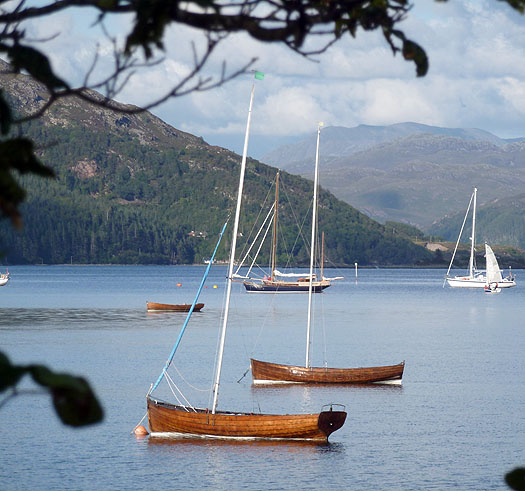
The John B Kearney-designed and built 36ft yawl Ainmara anchored off at Plockton in Wester Ross during her Centenary Cruise to Scotland which was awarded the ICC's Fingal Cup. The club's John B Kearney Cup for Services to Sailing, commemorating Ainmara's renowned designer-builder, was awarded last night to leading Dun Laoghgaire sailing family Con Murphy and Cathy MacAleavy and their daughter, Olympic sailor Annalise Murphy. Photo: W M Nixon
In other cruises, Garry Villiers-Stuart received the Wild Goose Cup for a "pilgrimage voyage" with the 1890-vintage cutter Winifeda of Greenisland, the Marie Trophy for the best cruise by a boat less than 30ft LOA goes to Mick Delap whose gaff cutter North Star is just 24ft long, the Glengarriff Trophy goes to former Fireball champions Adrian and Maeve Bell from Strangford for a cruise in Irish waters which was good despite the weather, the Perry Greer Bowl for a first log goes to Ann Lyons for a cruise among Celts fom Cork eastward, the Wybrants Cup for the best cruise in Scotland goes to Harry Whelehan of Howth whose venture to the Hebrides with the 32ft Sea Dancer found itself providing support for a currach from Kerry delivering an Irish language Bible (the first such apparently) to the religious community at Iona, and the Fortnight Cup for the best cruise in 16 days went to David Williams of Strangford Lough who managed to take the owner-built steel cutter Reiver to southern Brittany, 600 miles in the fortnight, and they got far enough south to be clear of the baleful effects of the jetstream which was blighting the weather over Ireland.

Awarded the Fortnight Cup. The 35ft steel cutter Reiver, to a design by Ian Nicolson of Alfred Mylne, was self-built by David and Peter Williams of Strangford Lough, and launched in 1988.
THE CARIBBEAN 600 SHOW GOES ON
Irish hopes in the RORC Caribbean 600, which starts on Monday from Antigua, received a horrible setback a week ago when Alan McGettigan of Dun Laoghaire's recently-acquired Swan 48 Wolfhound foundered just north of Bermuda. The boat was on a very challenging delivery passage from Connecticut via Bermuda to Antigua to take part in the race, and the crew of four with the owner in command were in no doubt about the scale of the task they faced. But with snowstorm Nemo developing over northeast America, the conditions in the Gulf Stream became extreme, and with multiple systems failures, a rescue by activating the EPIRB became necessary.
Wolfhound was a Swan 48 to this 1994 Frers design.
Nevertheless the sinking of a boat of this quality is extremely unusual, but we'll have to await the word from the crew (the ship which picked them up gets to Gibraltar next Tuesday) to learn if it was impact against the ship which sank Wolfhound. She was one of the Frers designed Swan 48s of which 57 were built between 1995 and 2003. The design was developed as the natural successor to the very successful Sparkman and Stephens-designed Swan 48 which was one of the classics which established the Nautor brand, so although Wolfhound was called a Swan 48, she was in fact just a smidgin under 51ft. This gives her even more Irish interest, as it means that at the time of her building, she was a sort of up-dated production version of Denis Doyle's legendary Moonduster, built by Crosshaven Boatyard in 1981, which was last reported to be based in Norway with an offshore sailing school in Trondheim.
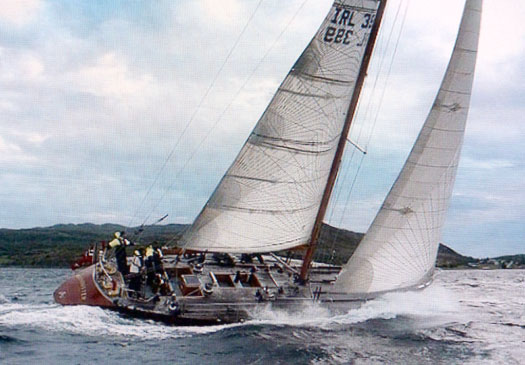
The Duster sails on. Denis Doyle's famous Frers sloop steps out seven years ago near her home port of Trondheim in Norway.
Meanwhile out in Antigua Irish hopes in the Caribbean 600 now rest with Dun Laoghaire's Michael Boyd, Niall Dowling and John Cunningham with the chartered First 40 Lancelot, the Reichel Pugh 78 Whisper skippered by Mark Dicker, and Northern Ireland's Peter Metcalfe in command of the 100ft Liara, though of course American Ron O'Hanley with the highly-fancied Cookson 50 Privateer, will find he immediately reverts to the nationality of his ancestors if Privateer does the good deed.
Defending champion Ran, the JV 72, isn't taking part this year, but her newer near sister Bella Menta (Hap Fauth, USA) is probably the bookies' favourite, though Mike Slade's ubiquitous hundred footer Leopard is on a roll after setting a new record in the Transatlantic race (she was on charter to Nik Zennstrom of Ran who fancied a bit of extra comfort to cross the pond) and can never be ruled out of contention.
NAOMH BAIRBRE AND A SILE NA GIG
The addictive Turas Huiceara on TG4 at 9.30 pm on Thursdays continued this week with Donncha and his hard-working pair of shipmates on the giant Galway Hooker Naomh Bairbre managing to get their enormous mainsail back in action with the new boom made from a tree felled in Stornoway.
Their voyage in search of Gaelic links along the Celtic seaways brought them to the Orkneys where - as suggested here last week - there's little enough trace of the Gael in a Viking-dominated archipelago. But a visit to St Magnus Cathedral, the remarkably fine mediaeval church in the Orcadian capital of Kirkwall, discovered what is apparently the most northerly Sile na Gig, a piece of unsubtle Celtic statuary incorporated into a stone archway.
There is no doubting what this little stone carving is all about - it makes even the most blatant Playboy centrefold seem totally demure by comparison. If this is the image of Irish womanhood being given to the Vikings of Orkney, no wonder they came down here in their hundreds expecting rape and pillage.
Finally heading south, the Naomh Bairbe found her way into the Caledonian Canal, with the site of the Gaelic-destroying Battle of Culloden nearby providing a mournful visit. But such are the demands of a continuous cruising narrative that there wasn't time to put Culloden into perspective, relating it to 1745 and the expedition into Scotland by that world-class messer Bonny Prince Charlie. You could understand, though, why he mightn't be mentioned – it's difficult to be serious about a man named after three sheepdogs.
Going down Loch Ness, there were interesting insights into the survival or otherwise of Gaelic in Scotland, with one speaker making the point that its disappearance means that people aren't really able to properly read the maps of their homeland, as the names of the significant features are all based on Gaelic.
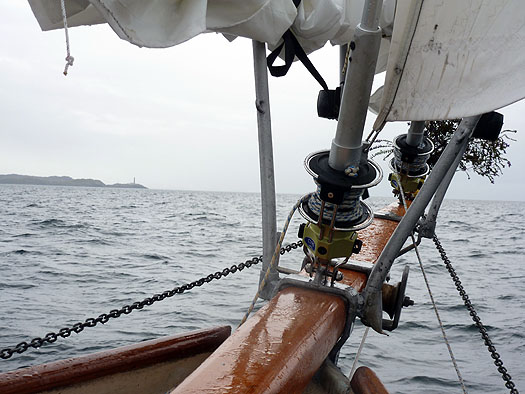
The Gaelic says it all. The Scottish mainland's exposed most westerly point is Ardnamurchan. It means the Headland of the Great Seas – this photo was taken in unusually smooth conditions, with the wind off the land, a rare experience0. Photo: W M Nixon
In fact, both the Clyde Cruising Club Sailing Directions in Scotland, and the ICC books on the Irish coast, make a point of including a large glossary of Gaelic coastal terms, as it does indeed greatly aid in "reading" a coastline. It may be a help to the survival of the old tongue, but on the other hand it simply reinforces Gaelic's featherweight status as no more than a holiday language.
Next Thursday sees the final episode of the Turas Huiceara saga. Whatever about its success as a television programme, it has been a fascinating cruise on an interesting boat, and I can only hope the crew of the Naomh Bairbe start to get some quiet enjoyment as they get nearer to home in Connemara.
Comment on this story?
We like hearing from you! Leave a message in the box below or email William Nixon on [email protected]
Oyster World Rally Launches This Weekend
#Oyster - A fleet of 27 yachts from North America, South Africa and Western Europe - including Ireland - will take part in the 2013 Oyster World Rally, which sets off from Antigua in the West Indies tomorrow (6 January).
Celebrating the 40th anniversary of the sailing brand, the launch from Nelson's Dockyard will mark the start of a "16-month odyssey of endless adventure" that will take the fleet all the way round the world via more than 30 ports of call.
After passing through the Panama Canal and into the Pacific, the rally will stop at the the Galapagos Islands, Marquesas, Tahiti, Bora Bora and Moorea.
From there the fleet will head to the Great Barrier Reef, round the top of Australia, partying in Bali and heading west for Cape Town in time for next Christmas, then on to Brazil for next year's carnival, before joining up for a final grand party with the Oyster Caribbean Regatta in April 2014.
And the Irish will be in the thick of the action, via the Oyster 885 'Lush' owned by Formula 1 pundit and sailing convert Eddie Jordan.
Oyster World Rally event manager Debbie Johnson said: “It is very exciting to finally be in Antigua getting ready for the start.
"So many sailors dream of sailing around the world and the camaraderie throughout the fleet is just fantastic."
Follow the progress of the fleet as the rally gets under way via the official website HERE.
Corkman Completes Round-Ireland Solo Sea Kayak Challenge
#SEA KAYAKING - It was a lucky Friday the 13th for Cork adventurer Mike Jones who returned to an enthusiastic reception on completing his solo circumnavigation of Ireland by kayak after 40 days at sea.
As previously reported on Afloat.ie, Jones set out from Cobh on Monday 4 June in an 18-foot sea kayak with the aim of completing the charity challenge in under five weeks.
Unfortunately the tumultuous weather of the past few weeks put paid to those plans, but as he told the Cork Independent, he "wasn't that far off" the 35-day mark.
"The weather was of course very bad and it was a battle for the first few days of it," he added. "The longest day for me was crossing Donegal Bay up north where I was kayaking for about 17 hours which was pretty tiring."
Despite the rough conditions, Jones was well prepared for any and all eventualities, even using a VHF radio to keep in regular contact with the Irish Coast Guard and carrying a GPS tracker so visitors to his blog could track his daily progress.
And considering his pedigree as an open-water rower - he became one of the first Cork men to row across the Atlantic Ocean in 2010 - Jones was more than able for the job.
But he also admitted that the kindness he received from strangers was pivotal to his successful effort, which has so far raised almost €3,500 for the Children's Sunshine Home and LauraLynn House for children with life-limiting conditions.
The Cork Independent has more on the story HERE.
Cork Adventurer Sets Out To Round Ireland by Kayak
#KAYAKING - Cobh native Mike Jones has embarked on a challenging solo circumnavigation of Ireland by kayak to raise funds for a children's hospice.
The adventurer departed on Monday 4 June in an 18-foot sea kayak, aiming to paddle up to 12 hours and complete a marathon distance of 30 miles each day to finish the challenge in under five weeks.
His kayak will be loaded with more than 50kg of essential kit and supplies, including lots of food - Jones will need to consume at least 5,000 calories each day if he's to keep up the pace and beat the rough seas and strong currents around the Irish coastline, especially in this weather.
Jones - a veteran of expeditions including whitewater kayaking in Nepal and rowing across the Atlantic - hopes this latest adventure will raise €10,000 for the Children's Sunshine Home and LauraLynn House for children with life-limiting conditions.
The attempt evokes memories of last year's solo circumnavigation of the island of Ireland by Elaine 'Shooter' McKenna - the first woman from Northern Island to achieve such a feat.
SportsYoga.ie has more on the story HERE.
Dutch Teen Breaks Record for Youngest Solo Round-The World Voyage
#WORLD RECORD - A Dutch teenager has become the youngest sailor to circumnavigate the world solo - following a court battle for the right to embark on the challenge.
Sixteen-year-old Laura Dekker sailed into harbour at Sint Maarten in the Caribbean on Saturday afternoon to complete her round-the-world voyage.
She arrived a year and two days after setting out, and beat the previous unofficial record held by Australian Jessica Watson by eight months, according to RTÉ News.
The feat is more remarkable in that Dekker sailed from port-to-port, staying at sea for at most three weeks at a time, whereas Watson voyaged non-stop.
But the adventure almost didn't happen, as Dekker and her father had to fight in a court in Utrecht for the right to attempt the record, as previously reported on Afloat.ie.
Dekker has originally planned to set out a year earlier, at the age of 14, but the court ordered her placed in the care of welfare officers on the grounds that she was too young to guarantee her safety at sea.
She finally won the court battle in July 2010 and set sail from Gibraltar the following month, though a change to her planned course saw the challenge officially begin in Sint Maarten in January 2011 instead.
However, the record will not be officially recognised by the Guinness Book of World Records nor the World Sailing Speed Record Council, which does not classify records by age.
RTÉ News has more on the story HERE.
Banque Populaire V Takes Jules Verne Trophy, Smashing World Record
#WORLD RECORD - France's Banque Populaire V has smashed the record for the fastest yacht sailing around the world, shaving nearly three days off the previous best.
BBC News reports that the yacht's 14-man crew crossed the line at 45 days, 13 hours, 42 minutes and 53 seconds to claim the Jules Verne Trophy - knocking 2 days, 18 hours, 1 minute and 59 seconds off the standing world record set by Groupama 3 nearly two years ago.
The 40-metre trimaran, which last year also set a record time in the gruelling Fastnet Race, raced around the globe with an average speed of 26.5 knots.
And the Loïck Peyron-skippered yacht would have beaten the challenge even sooner had it not been delayed for almost two days due to bad weather.
"It was an amazing feeling crossing the line," said crew member Brian Thompson in an audio interview with sailor Hannah White.
Franck Cammas, skipper of Groupama 3 and currently competing in the Volvo Ocean Race, also offered his congratulations to the Banque Populaire team.
"Obviously it's a superb performance as it's always complicated to sail around the world," he told Sail World. "Aboard boats which go so fast, you have to know how to keep pace and drive them at the right speed so as not to break them.
"The crew of Banque Populaire knew how to do it and they did a fine job."
Shooter to Give Talk on Record-Setting Kayak Voyage Round Ireland
Elaine 'Shooter' Alexander will be giving a public talk on her remarkable circumnavigation of Ireland by kayak in Co Fermanagh next month.
During the summer Afloat.ie tracked Shooter's progress as she battled against the elements to complete the round-Ireland route in 71 days - becoming the first woman to circumnavigate the island solo by kayak.
The Ulster woman had been training for over a year for the challenge, which was intended to raise funds for the Fermanagh-based SHARE, a charity that brings together disabled and non-disabled people in arts and outdoor-based activities.
On Saturday 22 October Shooter will be at the SHARE Centre in Lisnaskea to give a presentation and audio/visual show about her journey, followed by a question and answer session.
There will also be a meet-and-greet opportunity, as well as a chance to see the gear that she used on her epic voyage.
Tickets are priced at £7 for adults, £4 for children/OAPs/students/concessions, and £15 for a family ticket (2 adults/2 children).
Special B&B rates of £15 for adults and £10 for children are also available for those who want to make a night of it.
For all booking enquiries please contact [email protected].
The latest issue of Canoe & Kayak magazine takes in-depth look into sea kayakers Jeff Allen and Harry Whelan's record breaking circumnavigation of Ireland.
The final 225 miles of the voyage were completed in an incredible three days - a challenge that pushed the experiences kayakers to their physical and mental limits.
But the reward was a new speed record for kayaking round Ireland in just 24 days.
As previously reported on Afloat.ie, a documentary on the duo's feat is currently in the works.


























